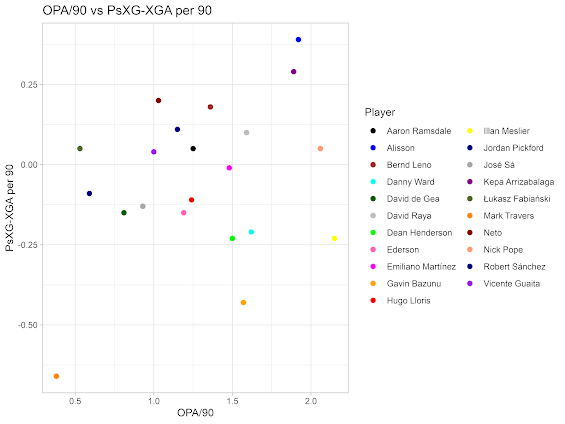De Geadache
.png)
Sweeping and keeping In this entry, in consideration of David De Gea's impending contract renewal discussions, I looked at goalkeeper performance in the premier league. Data is provided by FBRef. Ideally the graph quality would be better but blogger's image compression has defeated me on this occasion. This graph shows a selection of data points for premier league goalkeepers. On the y-axis is PsXG-XGA per 90, in essence this is a metric that measures a goalkeeper's shot stopping ability. On the x-axis is OPA/90, namely, the number of times a goalkeeper makes a defensive action i.e. clearing the ball outside their penalty area per 90 minutes. This can be a useful measure of the proactivity of a goalkeeper in protecting the space behind his defenders. This data set was filtered to remove any goalkeeper with less than ten 90s in the premier league this season. David de Gea will naturally already be well-known to practically all football fans and recently acqu...



